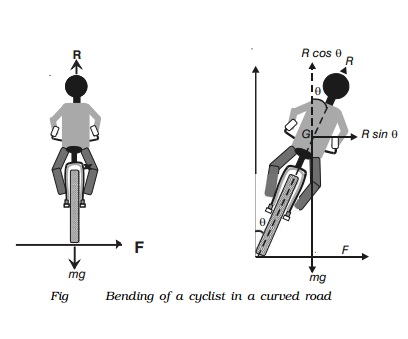Question #663f8
1 Answer
The question needs to be stated like this:
"why a cyclist leans inwards when he is negotiating a curve on a unbanked road"

Lets concentrate on the first figure on the left.
The cyclist when negotiating a curve towards his right, experiences three forces as shown.
Weight
Normal Reaction
Force of friction
Recall that motion in a circle requires centripetal force. This is provided by Static frictional force
where
When the cyclist negotiates the curve, Centripetal force
To prevent the cyclist from skidding centripetal force must be equal or less than the force of static friction.
While the cyclist negotiates the curve, if he bends inwards from the vertical, by an angle θ. The reaction
#R sin θ# component, acting towards the centre of the curve and providing required centripetal force.# R cos θ# component which balances the weight of the cyclist plus of bicycle.
For equilibrium
Dividing equation (1) by (2) we get
Equation (3) tells us the amount of angle cyclist should bend inwards for a given velocity and radius of curve so as to prevent skidding.
